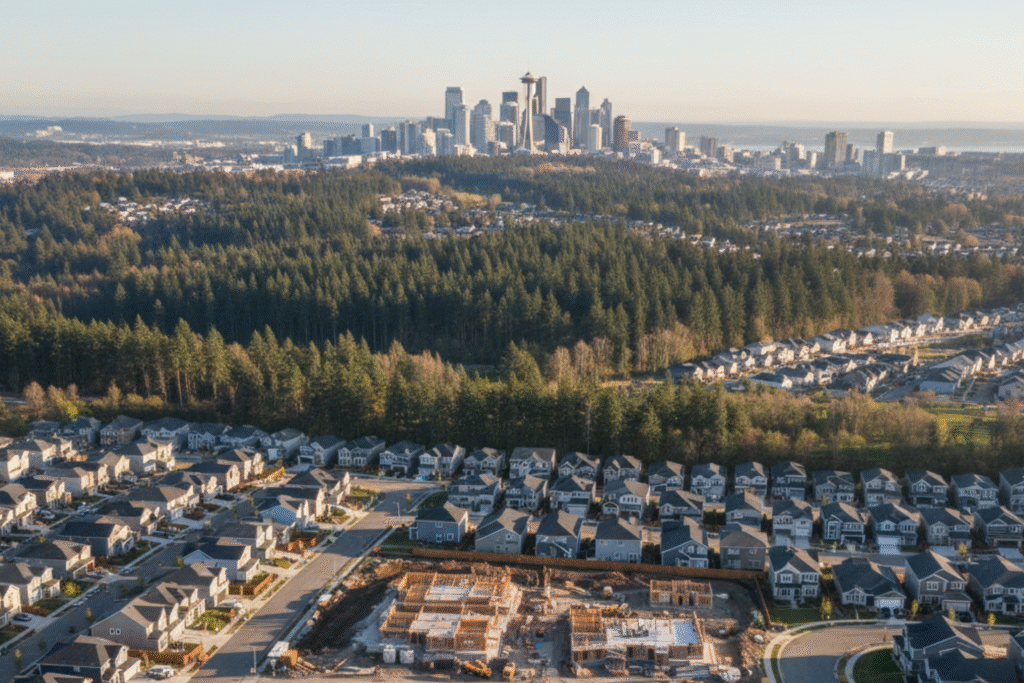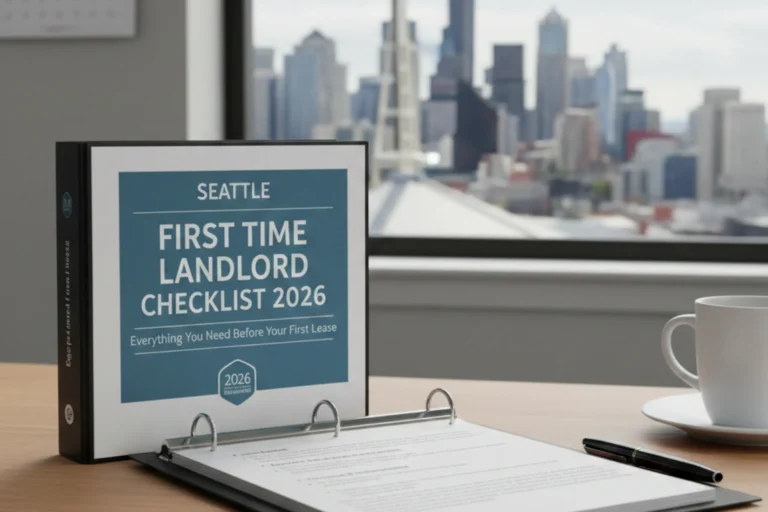Seattle’s median home price of $819,000 puts homeownership out of reach for many buyers and investors seeking opportunities in the Pacific Northwest. However, the Seattle metropolitan area includes numerous suburbs offering significantly lower entry costs while maintaining access to the region’s strong job market and quality of life.
These affordable suburbs near Seattle provide not just lower purchase prices, but genuine investment potential driven by factors including light rail expansion, employment growth, and increasing rental demand.
Understanding which suburbs offer the best combination of affordability and appreciation potential helps buyers and investors make informed decisions that align with both budgets and long-term financial goals.
The suburbs profiled below represent verified opportunities based on current median home prices, proximity to Seattle, transit access, and documented market trends. Each offers distinct advantages for different buyer profiles, from first-time homeowners to seasoned real estate investors building rental portfolios.
Looking to invest in affordable Seattle suburbs? Get a free rental analysis from SJA Property Management to evaluate which suburban markets offer the best returns for your investment strategy and budget.
Understanding the Affordable Suburb Opportunity
Affordable suburbs near Seattle have evolved beyond simple bedroom communities. Infrastructure investments, particularly the expansion of Link light rail, are reshaping suburban real estate dynamics. The Lynnwood Link Extension, which opened on August 30, 2024, added four new stations serving Shoreline, Mountlake Terrace, and Lynnwood, providing 28-minute traffic-free rides to downtown Seattle.
This transit connectivity has catalyzed dramatic housing growth. Within half a mile of these four new stations, the total number of apartments built or in the pipeline has surpassed 10,000 units. Shoreline alone is seeing 2,400 units under construction, increasing apartment inventory by nearly 44%. The Lynnwood City Center area, once home to just 128 units, is now zoned for 6,000 units.
For investors and homebuyers, this represents a critical window. Properties purchased before full transit-oriented development matures can capture appreciation as neighborhoods transform. However, timing matters. Areas too early in development face uncertainty, while fully developed transit corridors already reflect premiums in pricing.
The suburbs detailed below balance current affordability with documented growth drivers that suggest sustained appreciation potential.
1. Tukwila: Gateway Location at Entry-Level Prices
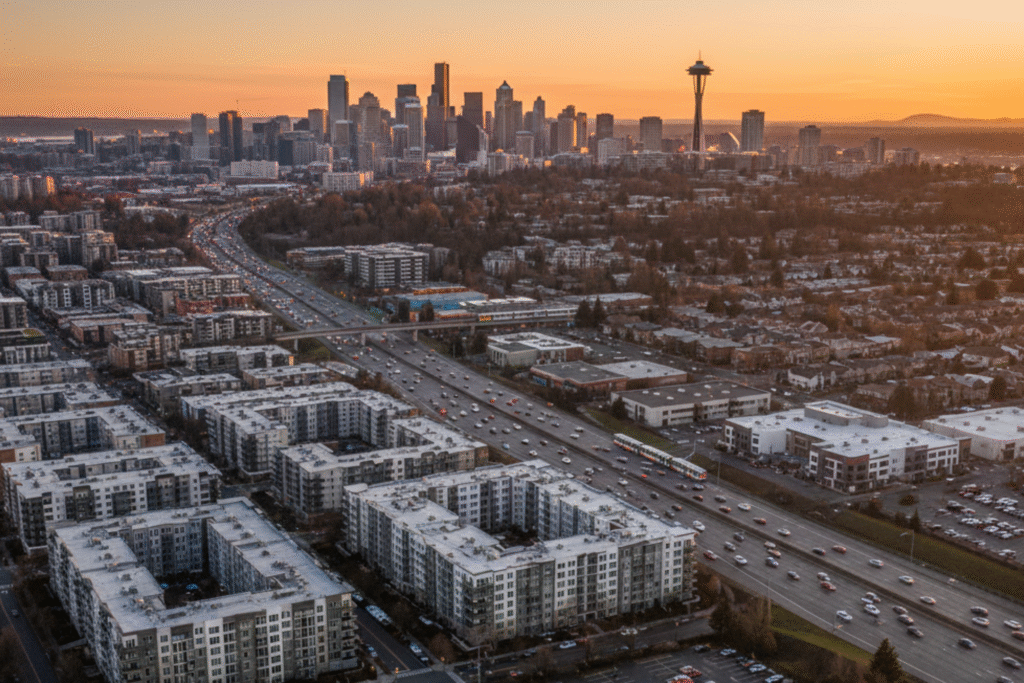
Median Home Price: $436,000 to $500,000
Distance from Seattle: 11 miles (25 minutes)
Average Rent: $1,761
Tukwila claims the distinction of being one of Seattle’s most affordable suburbs while offering exceptional geographic advantages. Located just south of city limits with direct access to I-5, I-405, and Seattle-Tacoma International Airport, Tukwila provides connectivity that justifies its investment consideration despite higher crime rates compared to other suburbs.
The city’s proximity to both Seattle and Sea-Tac Airport creates consistent rental demand from young professionals, airport workers, and those seeking affordable access to urban employment. The Museum of Flight and 17 parks provide community amenities, while retail concentration along Southcenter Parkway offers shopping and dining options.
For investors, Tukwila’s lower entry cost enables portfolio building or provides affordable first rental property opportunities. The trade-off involves higher tenant turnover typical of transit-oriented locations and the need for more hands-on property management given the area’s demographics.
2. Auburn: Balancing Affordability with Family Appeal
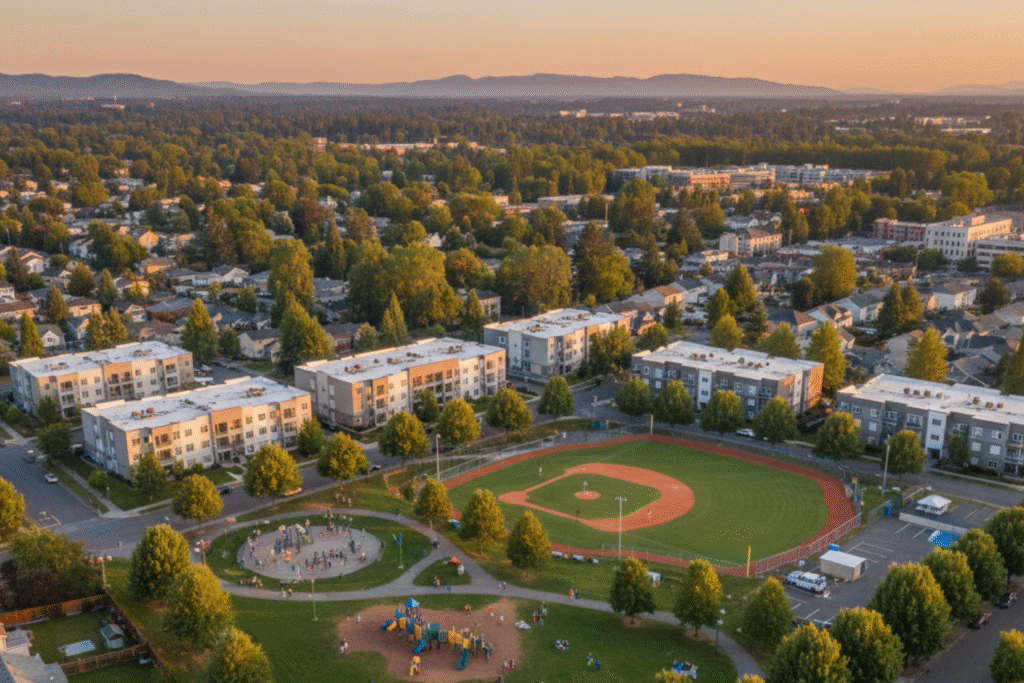
Median Home Price: $510,000 to $575,000
Distance from Seattle: 28 miles (40 minutes)
Average Rent: $1,824
Auburn offers the rare combination of affordability and family-friendly suburban character. Located in King County south of Seattle, Auburn provides lower prices than closer-in suburbs while maintaining reasonable commute access and community amenities including parks, outlets, and arts organizations.
The city’s location east of Federal Way positions it closer to mountain recreation, appealing to outdoor-oriented residents willing to accept slightly longer Seattle commutes. Auburn’s mix of housing stock, from established neighborhoods to newer developments, provides options for different buyer budgets and preferences.
Investment potential stems from steady demand from families priced out of closer suburbs and from Boeing employees seeking affordable housing near employment. The Green River and views of Mount Rainier add aesthetic appeal that supports long-term property values.
Need help evaluating Auburn properties for rental potential? Schedule a free consultation with SJA Property Management to analyze specific neighborhoods, school quality, and rental demand patterns that affect investment returns.
3. SeaTac: Airport Proximity Drives Consistent Demand
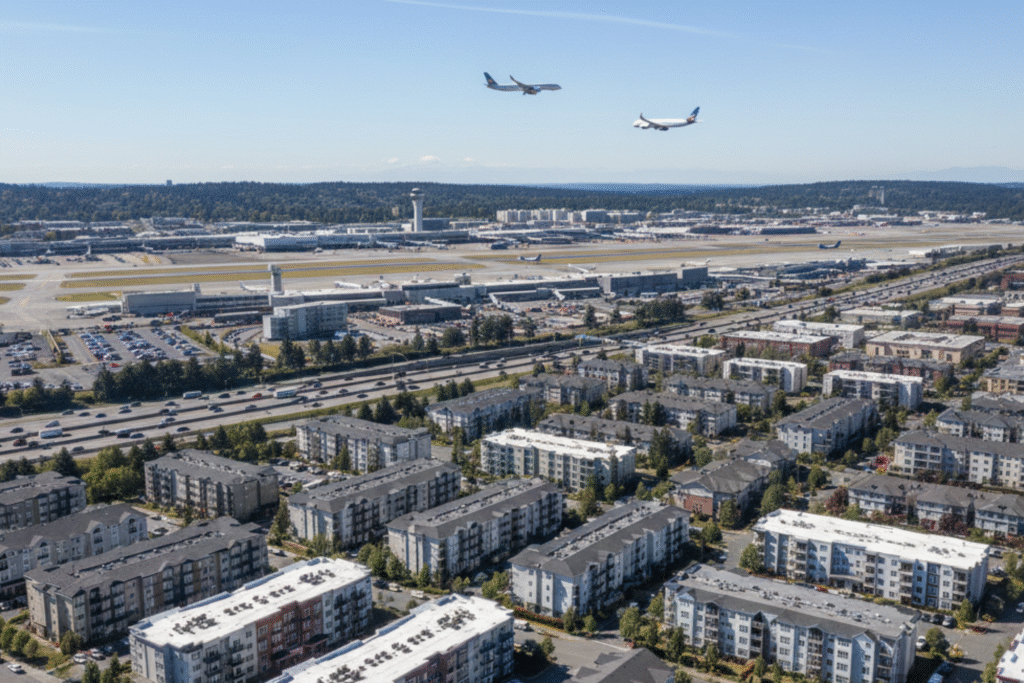
Median Home Price: $500,000 to $562,000
Distance from Seattle: 14 miles (30 minutes)
Average Commute Time: 26.6 minutes
SeaTac’s identity revolves around Seattle-Tacoma International Airport, creating unique rental dynamics. The city attracts airport employees, airline crew members, and travelers seeking convenient lodging, generating consistent demand that weathers economic cycles better than purely residential suburbs.
Light rail connectivity to both downtown Seattle and the airport enhances accessibility for renters who prioritize transit access. SeaTac’s central location between Seattle and Tacoma positions properties for appreciation as both cities continue expanding.
The investment challenge involves managing the transient nature of some tenant demographics and competition from short-term rentals near the airport. However, properties marketed to airport workers on long-term contracts or families seeking affordable access to both employment centers can generate stable rental income with lower vacancy risk than more expensive suburbs.
4. Des Moines: Waterfront Access Without the Premium
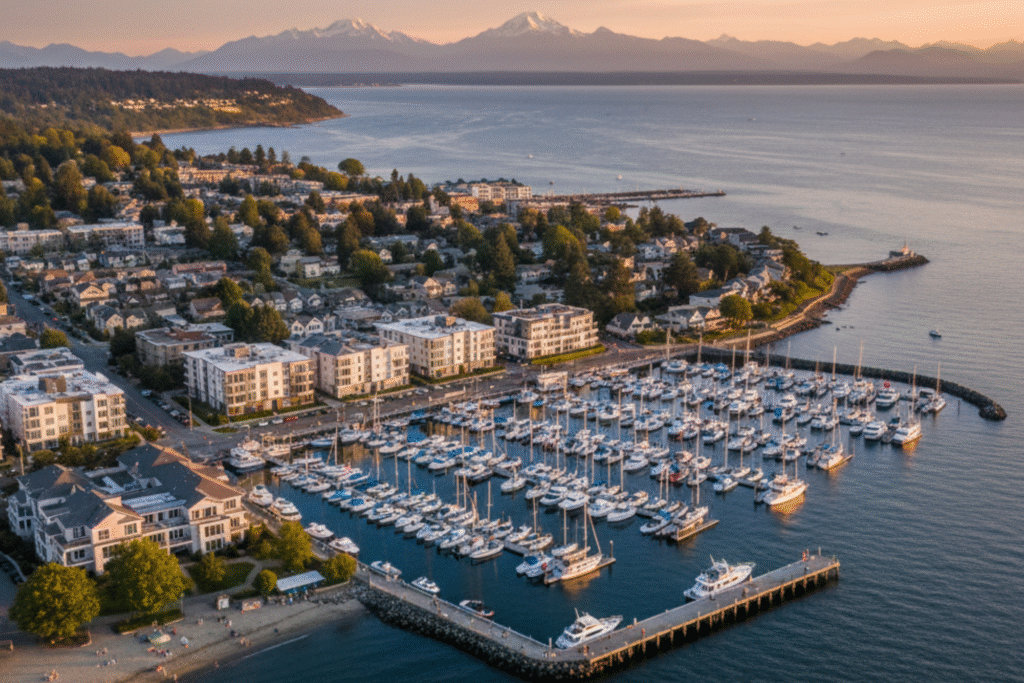
Median Home Price: $553,000 to $557,500
Distance from Seattle: 15 miles (31 minutes)
Average Rent: $1,824
Des Moines provides rare access to Puget Sound waterfront living at prices significantly below Seattle’s waterfront neighborhoods. The city’s marina, beach parks, and scenic Des Moines Marina district offer lifestyle amenities that attract quality tenants willing to pay premiums for water access.
Located along the eastern shore of Puget Sound, Des Moines combines small-town character with proximity to urban employment. The community’s walkable downtown, farmers market, and local businesses create neighborhood identity that supports property values and tenant retention.
For investors, Des Moines offers opportunities in both single-family homes and condos, with some waterfront properties available at prices competitive with inland suburbs. The city’s appeal to families and professionals seeking balance between affordability and quality of life supports stable rental demand.
5. Everett: Snohomish County's Affordable Urban Center
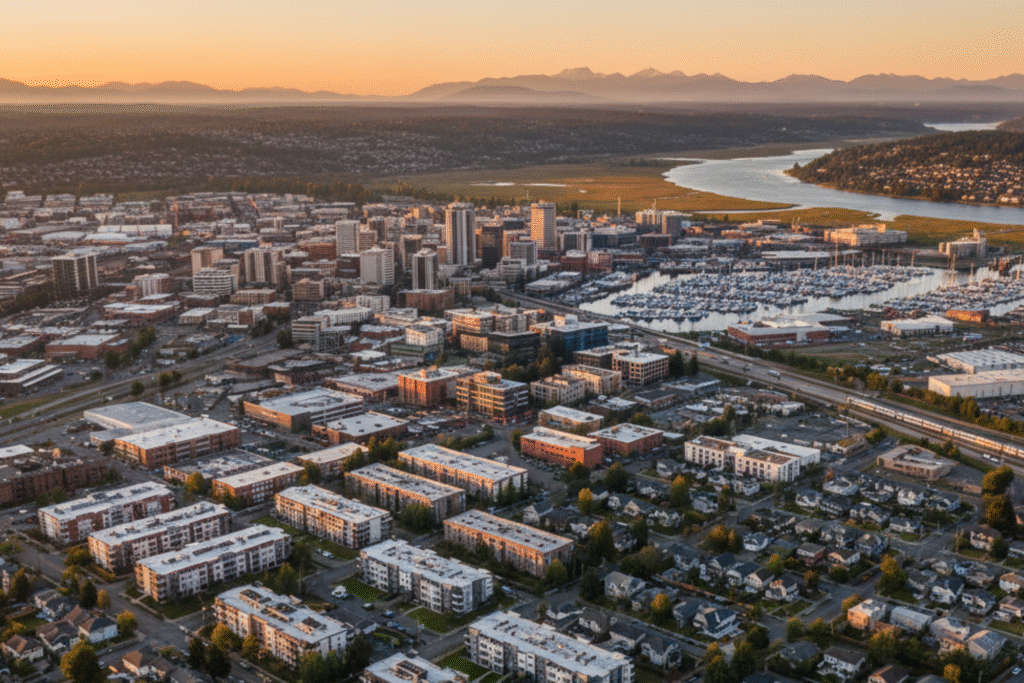
Median Home Price: $550,000 to $669,000
Distance from Seattle: 36 miles (30-40 minutes)
Average Rent: $1,842
Everett, Snohomish County’s seat and home to Boeing’s massive Everett plant, offers urban amenities at suburban prices. With a population exceeding 110,000, Everett provides employment diversity beyond aerospace, including healthcare, retail, and waterfront industries that create stable rental demand.
The city’s historic downtown features walkable neighborhoods with Craftsman-style homes alongside newer construction mimicking classic styles. The renovated Mukilteo ferry terminal provides additional transit options, while proximity to recreational opportunities in the North Cascades attracts outdoor enthusiasts.
Investment appeal includes both affordable entry points and potential for significant appreciation as the planned Everett Link Extension (targeted for 2037-2041) approaches. Properties purchased now may capture substantial appreciation before transit access fully prices into the market, though the extended timeline requires patience.
Ready to build a portfolio in Snohomish County? SJA Property Management offers 8 client guarantees including our 30-Day Lease guarantee and comprehensive tenant placement services that maximize occupancy in suburban markets.
6. Federal Way: Positioned for Light Rail Impact
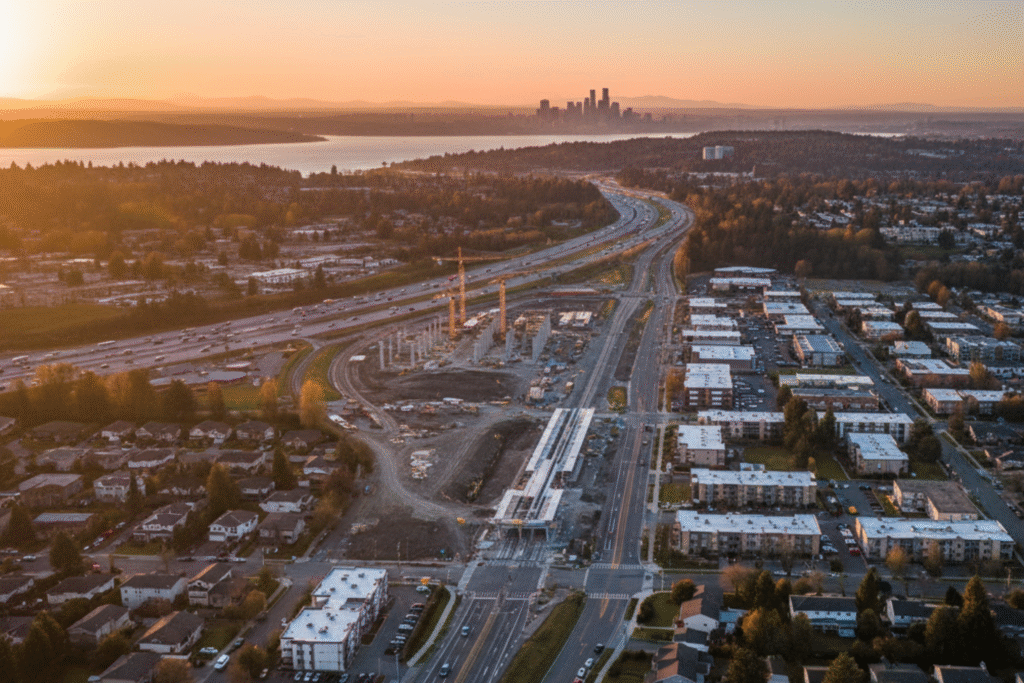
Median Home Price: $555,000 to $585,000
Distance from Seattle: 23 miles (37 minutes)
Average Commute Time: 33.3 minutes
Federal Way’s investment thesis centers on the coming Federal Way Link Extension, scheduled to open in late 2025. This 7.8-mile extension from Angle Lake will add light rail connectivity that historically generates property value premiums once service begins.
Currently, Federal Way offers suburban living at prices well below Seattle’s median, with homes typically selling in 11-18 days, indicating healthy demand. The city provides shopping, dining, and entertainment befitting one of Washington’s larger cities, plus proximity to Dash Point State Park for recreation.
Properties purchased before light rail service begins may capture appreciation as transit access transforms commute dynamics. However, recent data shows prices down 10.3% year over year (July 2025 median $555,000), potentially creating entry opportunities for investors willing to hold through the transit opening and subsequent appreciation cycle.
For families, Federal Way offers good schools and outdoor recreation. For investors, the combination of current affordability and pending transit access creates medium-term appreciation potential alongside steady rental demand from households seeking suburban character with improving connectivity.
7. Kent: Size and Diversity Create Stable Demand
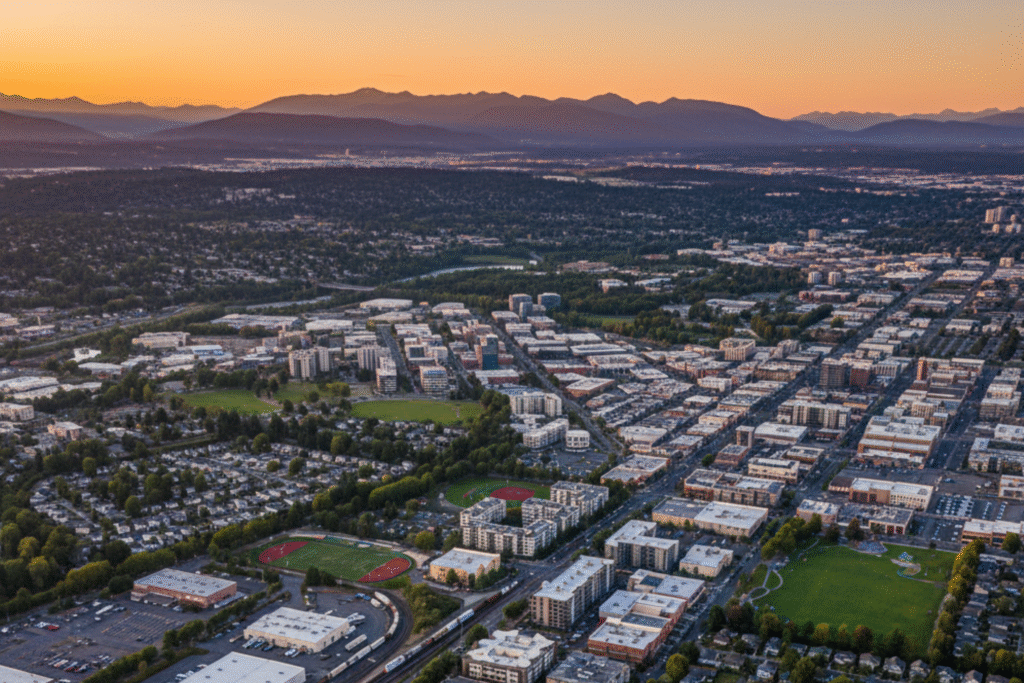
Median Home Price: $580,000
Distance from Seattle: 25 miles (25 minutes)
Kent’s substantial population of approximately 136,000 creates economic diversity that supports stable real estate markets through economic cycles. The city’s mix of residential neighborhoods, commercial districts, and industrial employment provides varied tenant demand from different demographic groups.
Views of Mount Rainier and the Green River add natural amenity value, while attractions like the Hydroplane & Race Boat Museum and Lake Fenwick Park provide community character. Kent’s location provides convenient access to multiple employment centers including Seattle, Renton, and Tacoma.
Investment advantages include housing stock diversity from established single-family neighborhoods to newer townhome developments, allowing investors to target different price points and tenant demographics. Kent’s size supports property management efficiencies when building multip property portfolios concentrated in one city.
8. Lynnwood: Light Rail Transformation in Progress
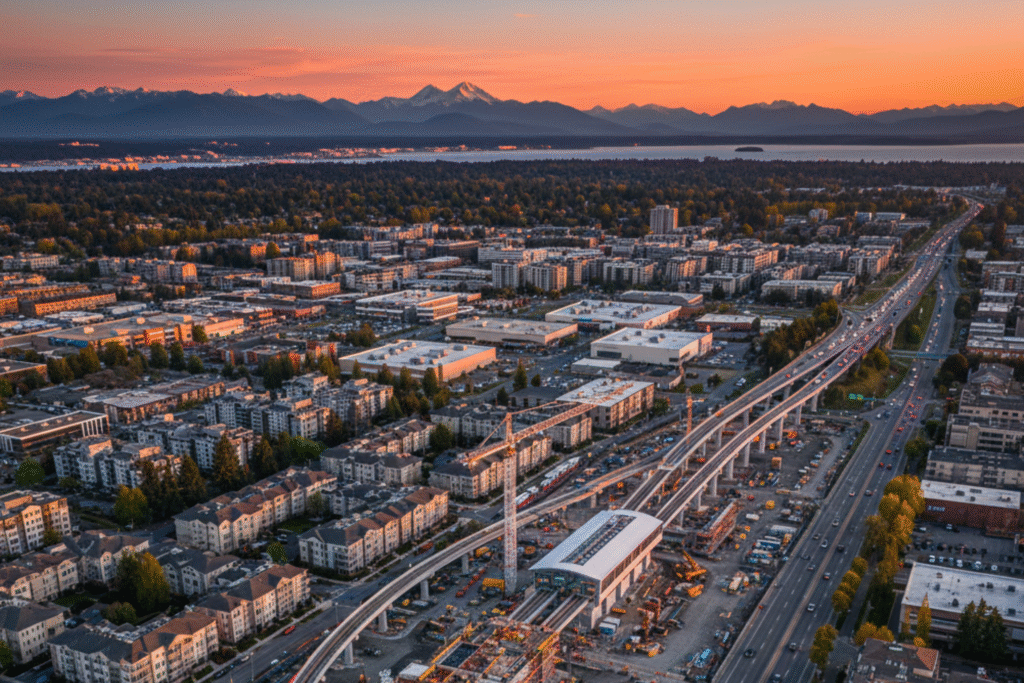
Median Home Price: $600,000+
Distance from Seattle: 16 miles (20-30 minutes via light rail)
Lynnwood represents an active transformation story. The Lynnwood City Center station, which opened on August 30, 2024, provides 28-minute traffic-free access to downtown Seattle. The station has already generated approximately 20,000 new daily passengers on the extension, with ridership expected to reach 47,000-55,000 daily by 2026.
The city’s planning around transit has been aggressive. The City Center area transitioned from 128 units to zoning for 6,000 units, with development proceeding rapidly. Within half a mile of the Lynnwood City Center station, over 10,000 apartment units are built or in the pipeline. A proposed 1,370-unit development called Northline Village will add significant inventory near the station.
For investors, Lynnwood presents both opportunity and competition. Early investors who purchased before the station opened captured first-mover advantage. Current buyers face more developed market pricing but benefit from established transit service and growing commercial development that supports rental demand.
The city’s transformation from highway-oriented suburb to transit-oriented community continues, with additional development expected throughout the 2020s as the full impact of light rail connectivity manifests.
Want to capitalize on Lynnwood’s transit-driven growth? Contact SJA Property Management for market analysis that identifies neighborhoods with remaining appreciation potential despite light rail premium pricing.
9. Shoreline: Positioned Between Seattle and New Transit
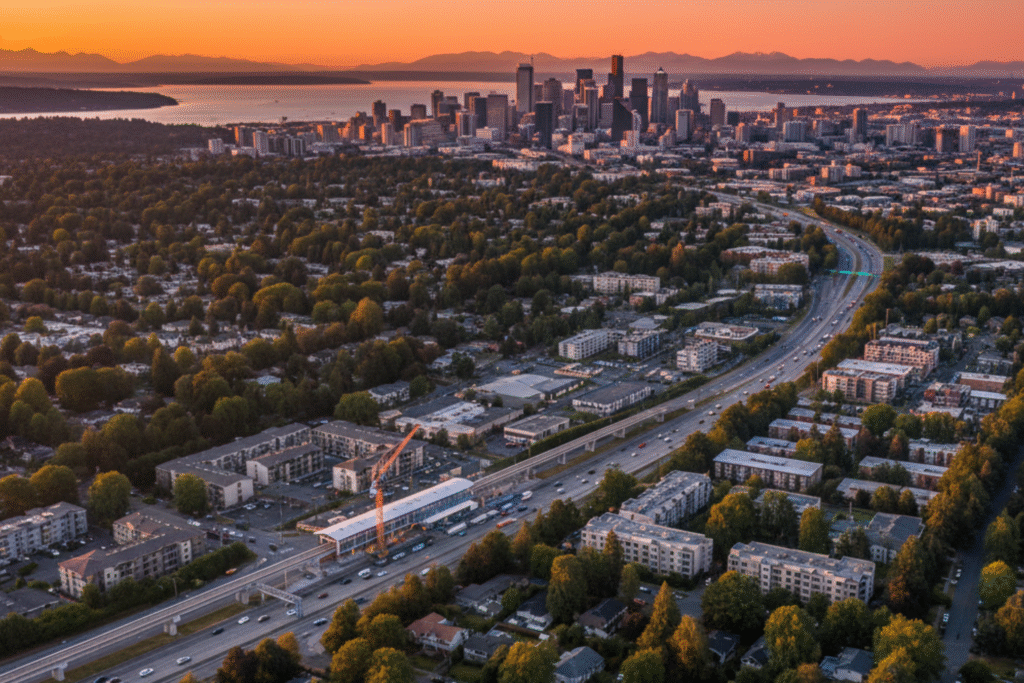
Median Home Price: $650,000+
Distance from Seattle: 10 miles north
Shoreline’s two new light rail stations (Shoreline South/148th and Shoreline North/185th) opened in August 2024, transforming this formerly car-dependent suburb. The city prepared for transit by updating zoning to allow denser development in targeted residential areas, implementing a 12-year multifamily tax exemption incentivizing affordable housing.
The result has been explosive growth: 2,400 units under construction will increase Shoreline’s apartment inventory by nearly 44%. The community of 58,700 people could eventually see 33,000 new units on just 7% of city land, concentrated around transit stations.
Shoreline’s proximity to Seattle (just 10 miles north) combined with new transit access creates strong fundamentals for appreciation. However, current prices reflect transit premiums that have already priced in some future appreciation. Investors should focus on properties slightly beyond immediate station areas where transit benefit exists without full premium pricing.
10. Mountlake Terrace: Small City with Big Transit Plans
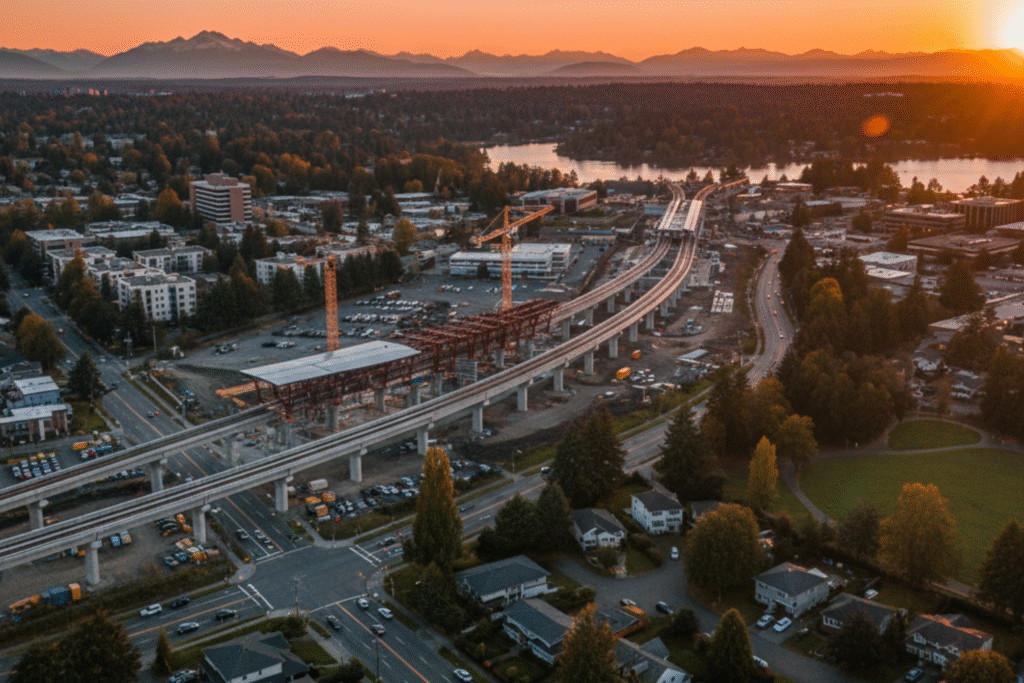
Median Home Price: $650,000+
Distance from Seattle: 13 miles north
Mountlake Terrace’s station on the Lynnwood Link Extension positions this smaller city (population approximately 21,000) for growth disproportionate to its size. The city implemented zoning changes and development incentives anticipating transit, similar to neighboring Shoreline.
The smaller city size creates both opportunity and limitation. Less development capacity means less competition for tenants, but also less commercial amenity development. Investors should focus on family-oriented rentals that appeal to households seeking small-town character with transit access to urban employment.
Mountlake Terrace’s station includes substantial park-and-ride capacity serving commuters from areas beyond walking distance, creating secondary demand from households throughout south Snohomish County who value proximity to transit access even if not within walking distance.
Making Strategic Suburb Investment Decisions
Affordable suburbs near Seattle provide diverse opportunities matching different investment strategies and risk tolerances. Properties in transit-served suburbs like Lynnwood, Shoreline, and Mountlake Terrace offer appreciation potential but command premiums reflecting anticipated growth. Suburbs like Tukwila, Auburn, and Kent provide lower entry costs with steady demand but potentially slower appreciation.
Successful suburban investment requires matching property selection to target tenant demographics. Family-oriented suburbs need good schools and parks. Transit-oriented locations attract professionals prioritizing commute convenience. Airport-adjacent areas serve transient populations requiring different management approaches.
Market timing considerations include light rail construction schedules, local employment trends, and development pipeline analysis. Properties purchased 2-3 years before major transit openings can capture appreciation, while properties in recently opened transit corridors may have priced in initial premiums but offer more certain near-term rental demand.
Ready to build wealth through strategic suburban investment? SJA Property Management offers comprehensive services including market analysis, tenant placement, ongoing management, and investment strategy consulting. Our 24-hour Response Time guarantee and No Fee Cancellation policy ensure you receive professional service while maintaining flexibility as your investment strategy evolves.
Your Path to Suburban Investment Success
The affordable suburbs near Seattle profiled above represent verified opportunities with documented price points, transit access, and growth drivers. Each suburb offers distinct advantages for different investor profiles and strategies. The key is matching your budget, risk tolerance, and management capacity to locations that fit your specific situation.
Start by evaluating which suburbs align with your investment criteria. Consider current affordability relative to your budget, distance and commute times affecting tenant demand, transit access and future expansion plans, local employment diversity supporting stable rental markets, and property management requirements based on tenant demographics.
Seattle’s suburban markets will continue evolving as transit expands, employment grows, and housing demand exceeds supply. Properties purchased strategically in affordable suburbs with strong fundamentals can generate both steady rental income and long-term appreciation that builds wealth over time.
Ready to identify your ideal suburban investment opportunity? Contact SJA Property Management for personalized market analysis, property evaluation, and professional management services. Our comprehensive approach helps investors succeed in suburban markets while minimizing the time and complexity of property ownership.
Continue building your real estate investment knowledge with our complete library of market analysis and investment strategy resources.

